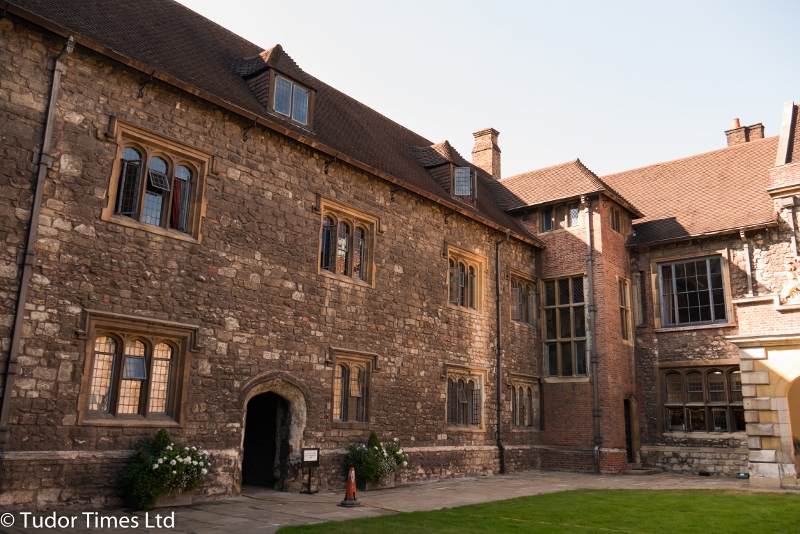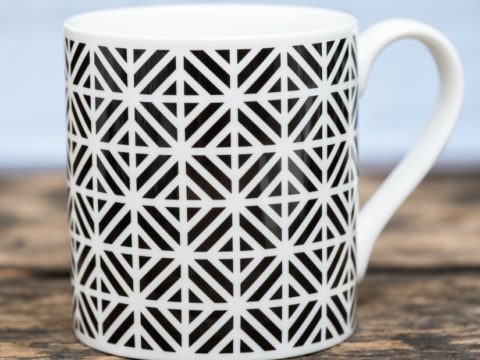Thomas More: Always a Londoner
Chapter 3 : City Life
During More’s early career he lived perhaps for as long as four years in the Carthusian monastery (the Charterhouse (8)) in London. Biographers differ as to whether he was lodging there, or whether he was genuinely contemplating taking vows and withdrawing from the world. The Carthusians were the strictest of all the monastic orders. They followed the rule of St Benedict, but, rather than living communally, each of the twenty-five brothers lived in individual rooms around a cloister, with almost no interaction.
The Carthusians of the London Charterhouse were the most famous opponents of Henry VIII’s policy of rejecting Papal Supremacy, and later, of the dissolution of the monasteries. The Prior, John Houghton, and six of the brothers who refused the Oath of Supremacy, were first imprisoned in the Tower, then dragged prostrate to Tyburn where they were hanged, cut down whilst still alive, and had their bowels torn from their bodies. Their remains were then quartered and distributed around London as a warning to other. Nine other brothers died in the Tower.

After the monastery was finally suppressed in 1538, the property became Crown land, until it was acquired by Sir Edward North, Chancellor of the Court of Augmentations. North tore down much of the Abbey, including the chapel, to replace it with a mansion. It later became almshouses and a school, as part of the charitable bequests of Sir Thomas Sutton. Today, it still provides accommodation to those of limited means and can be visited on pre-booked tours.
More was essentially a city dweller. In an early published letter, he exhorted his friend, Dr Colet, to return to London, despite the pleasures of the country, so we can suppose that he spent little time at the country estate that he owned with his father, Sir John More, called Gobions (9), or Gubbins.
Gobions, which is in North Mymms, Hertfordshire, was held in 1390 by a John More, and consisted of one and a half knights’ fees. By 1500, it was owned by Thomas’ father, although whether through inheritance (as suggested by the name) or purchase, seems unknown. Confiscated by the Crown after More’s execution, Edward VI gave his sister, the Lady Elizabeth, a life interest in it.
Without disturbing her sister’s possession, Mary I granted the reversion of the property to Anne Cresacre, widow of More’s son, John. It descended amongst the Mores and their relatives for a couple of generations, but by 1836 it was in the hands of Robert Gaussen of nearby Brookman’s Park, who pulled down the remains of the house, and incorporated the lands into his own.
It is possible that More’s first wife, Joanna Colt, was from a family with lands in the same district, although some sources suggest she was from Essex.
The lands which were once More’s, are now part of Gobion’s Wood, managed by the Herts and Middlesex Wildlife Trust. In the spring there is always a wonderful show of bluebells and rare species of fungi are visible in autumn.
Whether or not More did his courting in Hertfordshire, he was soon back in London, and as he became more senior in his profession, he became a member of the Worshipful Company of Mercers, thus becoming a Freeman of the City, able to vote in elections, and eligible for a role in the City’s government.
The Mercers’ Company was then (and is still) pre-eminent amongst the City Livery Companies and Guilds, chartered by Richard II in 1394. It was for the Mercers’ Company that More undertook his first trip to continental Europe, and it as a member of it that he was selected to make a speech of welcome to the Emperor Charles V on his visit in 1522.
In More’s time, meetings were held at the Hospital of St Thomas of Acre until the Company purchased land from the Hospital in 1512 to build a Livery Hall of its own. The new hall, which had a chapel below and a meeting chamber above, fronted onto Cheapside (10), until it fell victim, like much of More’s landscape, to the Great Fire of 1666.
Today, the Company, mainly concerned with charitable work, meets at Mercer’s Hall in Ironmonger Lane, north of Cheapside. It is not to be confused with Ironmonger Hall, home of the Ironmongers’ Company.
More began married life in part of a property called the Old Barge, Bucklersbury (11). The street runs south off Cheapside – barely a stone’s throw from his childhood home, and school. Bucklersbury, although landlocked now, was on the edge of Walbrook – one of the main watercourses of London, which ran both under- and over-ground through the city.
Bucklersbury was the point at which the Walbrook becomes navigable as it heads towards the Thames and the house Thomas lived in, the Old Barge, was probably the point at which craft moored. It is estimated that the river was around fifteen foot wide at this point. It was whilst he was living at the Old Barge that Ammonius and Erasmus stayed with More, and where he and Erasmus chuckled over Erasmus’ satire, ‘In Praise of Folly’, dedicated to his friend.
The Old Barge is long gone – the sides of the Walbrook collapsed in the 1550s, and the river was built over. Today, Bucklersbury, not far from the Mansion House, the official residence of London’s Lord Mayor (to be distinguished from the Mayor of London), is the location of modern office blocks.



